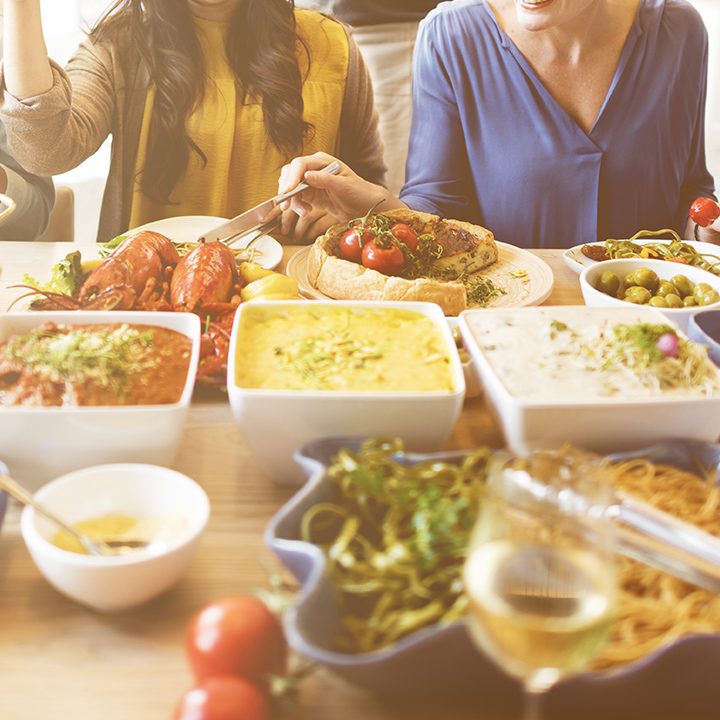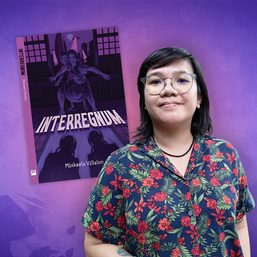SUMMARY
This is AI generated summarization, which may have errors. For context, always refer to the full article.

Women now have a lot of goals in life, but it all starts with how we fuel our bodies based on what we eat.
Registered nutritionist and dietitian Jo Sebastian of REBEL, a local fitness app that provides free workouts, health education and recipes that uses ingredients that are readily accessible in the Philippines, answers the top 10 questions of women about how they should eat.
(FULL INTERVIEW: Rappler Talk Sports: Fueling a woman’s body with Jo Sebastian)
What is considered sustainable weight loss and weight gain?
Jo: The healthy kind of weight loss is one to two pounds per week, but this varies also especially for beginners. Though it’s not necessarily like that, if it’s like 10 pounds a week, then that’s dangerous. (READ: Weight or body fat: What do you really want to lose?)
But if you go up to maybe 3 or 4 pounds for the first few weeks of your journey, sometimes that’s because it’s a big change in your lifestyle – that your body is also not just losing fat, but it’s also losing some water weight, so some of those things come into consideration as well.
People tend to want to rush the process and we want to get the quickest results as much as possible, but when we actually take it slower, it’s much more sustainable, and also healthier overall in general, so one to two pounds is the ideal.
What is the ketogenic diet and do you recommend it?
Jo: The ketogenic diet is basically a very low carbohydrate diet. And to give you a little bit of perspective of what are your carbohydrate sources, that’s usually your rice, your greens, your potato, sweet potato, bread, pasta. (READ: Should you try the Keto diet?)
Now, when you say very low carbohydrate, this is like below 50 grams of carbs and that’s like 4 slices of bread.
Who is it for? It was initially designed for those who had epilepsy because this diet helped them minimize seizures. But even when they minimize that, for you to be able to do that diet, you cannot go over two years.
And there’s a loading period as well, where you don’t just go boom! No carbs. There’s a period of time, where we have to minimize carbs. Also something that most people don’t know is that if you’re [consuming] a lot of protein during a ketogenic diet, you’re actually not in ketosis, because your body is using the protein for energy sources and protein can turn into glucose through a pathway.
If you’re going to do the keto diet, at least make sure you’re consulting with a professional, as you do it, but I personally wouldn’t recommend it, especially for weight loss.
Is intermittent fasting helpful?
Jo: In intermittent fasting, you have breaks of eating and fasting windows, and sometimes people do a 5/2, which is 5 days of eating and two days of fasting, the 16/8, which is the most common – 16 hours of fasting and 8 hours of eating. There’s also the 12/24, where you only eat one meal a day.
However, the negative impact of this is sometimes it can lead to binge eating, where you treat that as more of like a restrict binge, where you’re just given a window to eat whatever you want and then it can lead to an unhealthy relationship with yourself and food.
I tried intermittent fasting before when I was in college and I lost a lot of weight, but then I was also waiting for every single second before 12 noon.
The reason why intermittent fasting works is because you’re still going on the calorie deficit, where we’re eating less energy than your body needs.
But if you’re gonna end up eating more as well, then you might just want to space out your meals throughout the day.
Should I eat before working out?
Jo: If you can’t do a workout without any food, don’t do it because then you won’t be able to hit your workouts 100%. Oftentimes, you want to have your high-carbohydrate meals, so that’s often the easy to digest as well, so you can have your fruits, you can have your white bread, you can have your potatoes, and then the post-workout is when you want to also have carbohydrates and protein.
But for those who are not necessarily major athletes, who have specific goals, then your timing of the meals around your workouts, aren’t necessarily that important, you just really want to fuel up.
How do I know if I’m eating enough?
Jo: Let’s say you’re trying to lose weight, you don’t want to go major big calorie deficit. That’s why the most is 500 calories less than your normal, but you can even do 300 or 200 calories lower if you want to be more conservative and you also want to preserve your hunger and your appetite.
Oftentimes, long-term dieting can really impact your hunger hormones, so if it’s really going insane and crazy that you’re just going to be hungry, that’s when I would take a diet break where I would stay off of the deficit for a bit until I feel a little bit more satiated and I would think about food less all the time, and then you can jump back into your calorie deficit.
But you also have to look into if you are consuming too little food. And also, to make your meals more satisfying because I think that one of the biggest tendencies is our instant thought is smaller meals, the better, but you don’t actually have to be starving to lose weight.
There are ways to make your meals satisfying and that’s by increasing either your protein, increasing your fiber or having a little bit more fats into your meals, so you actually feel satisfied, and you can go on about your day.
How should I eat during my period?
Jo: Bloating just happens, but you can minimize the uncomfortable feeling of it by increasing your fiber intake, so get more fibers in, but watch out for your gas-making fibers. So you want to look at low FODMAP foods like your bananas, your berries, your carrots, also squash and you want to kind of minimize your intake of broccoli and cauliflower.
Increase your water intake and decrease sodium intake, so that you don’t retain a lot of water which can lead to more bloating.
Space out your meals throughout the day, so having those big meals often makes you bloat more or having a big moment of like not eating and then eating a big meal can make you feel more bloated.
For cramps, the things to look into is increasing magnesium because this is a muscle-relaxing nutrient that you can get from your legumes, your nuts and your seeds. Decrease your intake of fatty foods because this has also been seen to increase your cramping feeling.
And then another one is caffeine. So caffeine has also been seen to increase your cramps, so you can also minimize that.
How do you manage your cravings?
Jo: When you’re in the luteal phase during your period, which is when your hormones are going down now, because the egg was not used, this is usually when you tend to burn like 100 to 150 calories more, which now you understand the tendency to want to crave more food because your body is getting ready to bleed.
And my main thing for cravings is if you’re craving something, then go for it. Just of course see how much you want, or how much you want to eat of it until what will make you feel good because our tendency is like: ‘No, you’re not allowed to eat, and then you eat it and then you’re just like aww man, I ate the whole thing’ versus if we allowed ourselves to eat it, you could just be like: ‘I want one. I really want another one. Okay, I’m good’.
Finding a way to listen to your cues, and also keep a note of your craving, so kind of see the pattern – I tend to crave more high-fat foods during my period, I tend to crave more carbohydrate-rich foods.
If you’re not on your period, you want to look at your overall intake first. Are you going to be taking enough food in general? Because if you’re not, then that might be one of the reasons why your body’s like: ‘Okay I need something high-calorie, high-energy right now, because we’re not consuming enough.’ So that’s a possibility.
Then of course, if you see that you’re consuming enough food, satisfying meals throughout the day, now you can look for your substitutes and sometimes you can do a substitute like a fruit or you can also simply balance out your sweet food, and add a fruit.
Like, for me, I would do maybe like a banana with an Oreo or like some marshmallows on my banana or a digestive or Wheat Thin with nutella – kind of having a mix of both.
If the only thing you can consume now is processed food, let’s just add some vegetables like let’s put in some cabbage into instant noodles or some carrots. It doesn’t have to be one or the other. You can always put them together into something a little bit more satisfying and more nutrient dense.
What is a good meal for breastfeeding moms?
Jo: I don’t recommend to diet or to go on a calorie deficit right away. In fact, when you are lactating you have to consume about 500 calories above your usual intake to help you sustain your milk production.
So I would just go with being physically active. And then of course, increasing your high-fiber fruits and vegetables, and your high-fiber greens, and then consuming lean sources of protein, and then the important part as well as to get your omega-3 types of fats, which is from your nuts and seeds, some of your firm, oils, and some fish sources like your salmon, tuna, mackerel, and sardines.
How can I adjust my diet during pregnancy?
Jo: You’ll have to consult with your doctor to find out and then we’ll have to know the specifics for your needs.
Usually during the first trimester, there isn’t really an added amount of intake yet, but it’s when you go through your second and third trimester that we usually add 300 calories there, and it’s always important to consume a balance of all of the nutrients.
This is usually the time when I would definitely recommend your pregnant mothers to not go low-carb because your body and your children will need carbohydrates, unless of course you’re going through diabetes, that’s when you can watch out your carbohydrate intake.
Of course, increase your protein because your body’s gonna need that, and then your fat sources like omega-3s because that will help your baby build its brain.
But the tendency when you’re pregnant is like you think: ‘Oh I’m eating for two.’ Everyone will say: ‘Go and give in to the cravings’. Just like when you’re not pregnant, it’s really just finding the balance of how much you need to intake to maintain a healthy weight during your pregnancy.
What food should I eat and avoid when I have gastroesophageal reflux disease (GERD) and polycystic ovary syndrome (PCOS)?
Jo: For GERD, there aren’t always specific food items because it depends from person to person, which are your trigger foods – it can be high-fat foods, it can be dairy, it can be peppermint, caffeine.
But the most important part is being able to eat because when you have heartburn, it’s hard to eat, you feel like puking, so how do we get this person to be able to consume the regular meals?
That something that might help us is drinking a few sips of water throughout your meal to help digestion flow, and then having smaller meals, so really finding the meal pattern for yourself to space it out for around 2 to 3 hours.
Other things that you want to avoid is lying down after eating, and also making sure you don’t work out right after you eat right, and sometimes a probiotic can help.
For PCOS, it’s kind of the same management as diabetes because the thing that you look into is your insulin resistance.
It’s mostly around the types of carbohydrates you’re consuming, the timing around your day to help you manage that.
And of course foods that will help you fight inflammation because we want to reduce the inflammation through consuming your foods like your omega-3 foods, and also your antioxidant foods to reduce that inflammation and help minimize PCOS. – Rappler.com
Add a comment
How does this make you feel?








There are no comments yet. Add your comment to start the conversation.